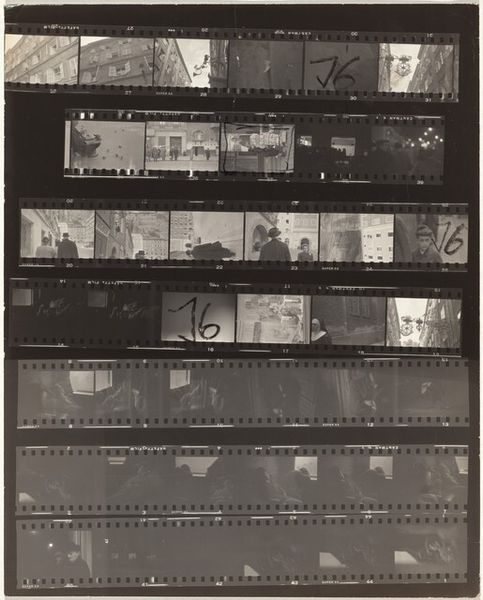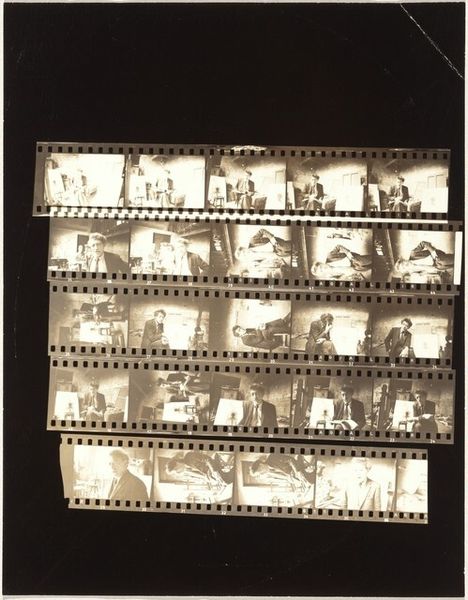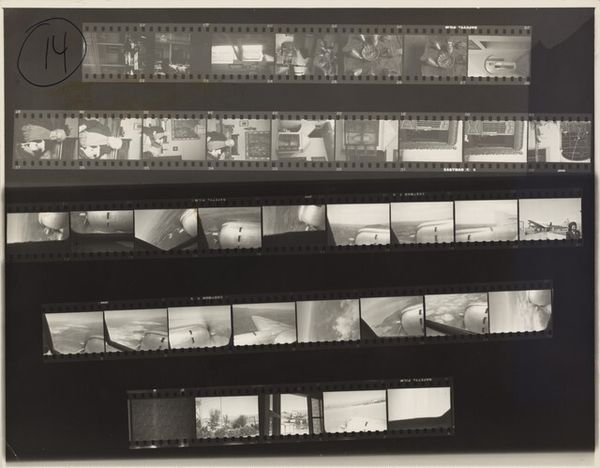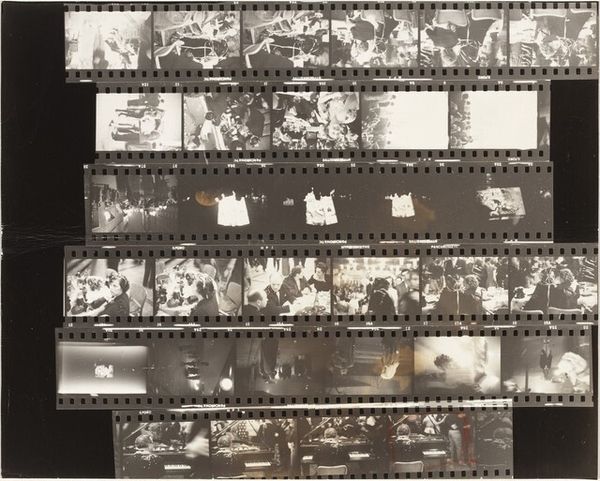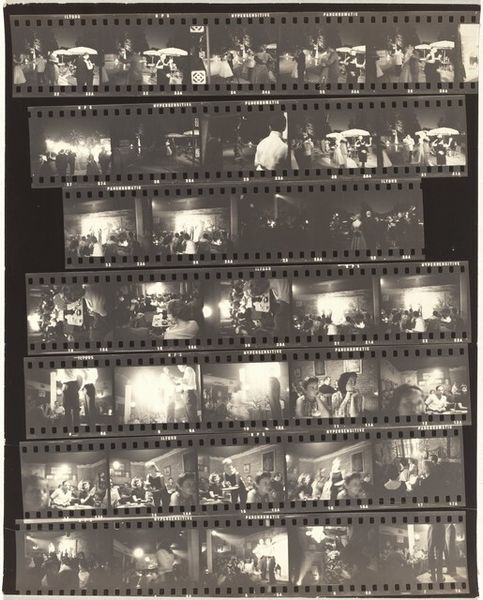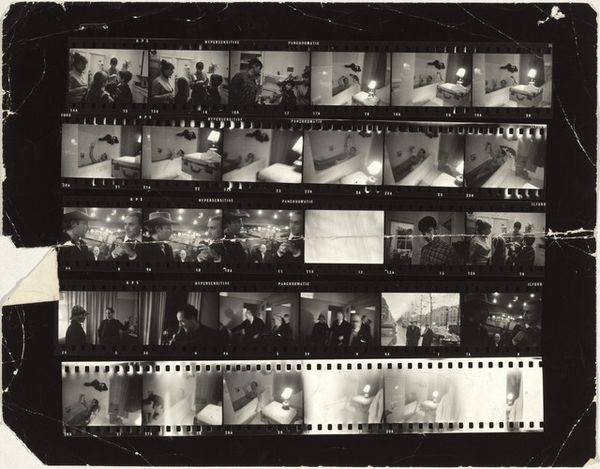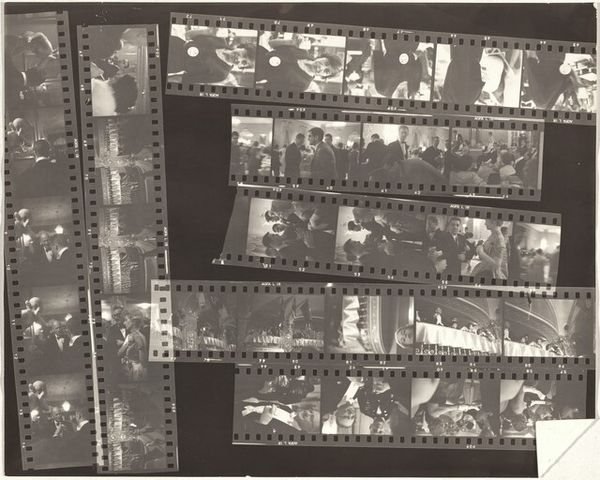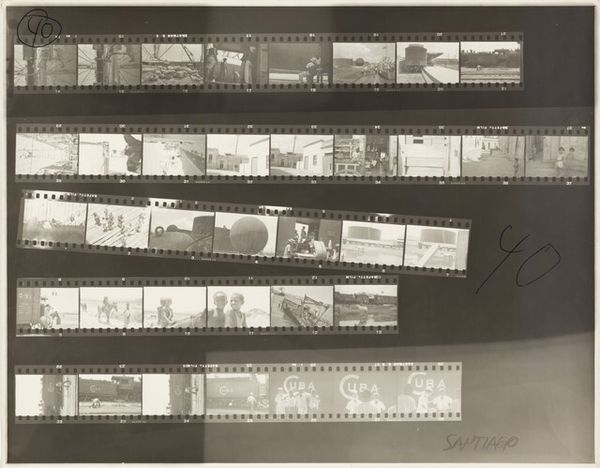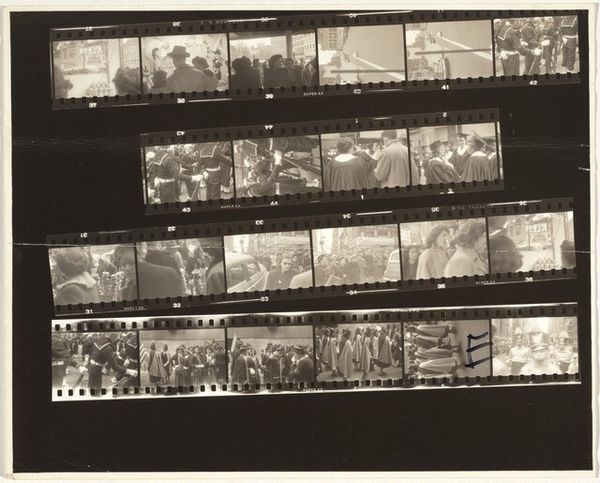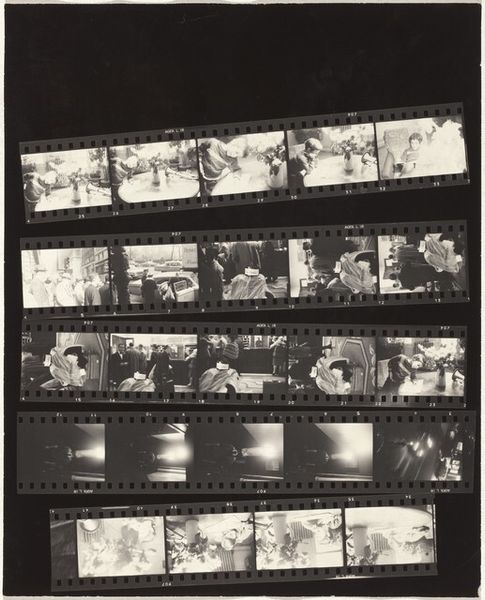
photography, gelatin-silver-print
#
film photography
#
archive photography
#
street-photography
#
photography
#
historical photography
#
gelatin-silver-print
#
monochrome photography
#
cityscape
#
monochrome
Dimensions: overall: 20.2 x 25.2 cm (7 15/16 x 9 15/16 in.)
Copyright: National Gallery of Art: CC0 1.0
Editor: This is Robert Frank's "Calder sculpture--Hollywood 31" from 1958, a gelatin silver print. It’s quite interesting seeing the image presented as a strip of film. I’m struck by the contrast between what appears to be a chaotic public space, with perhaps a screening on film and the mobile sculpture set against the Hollywood skyline. How do you interpret this juxtaposition? Curator: Considering Frank's documented approach, focusing on social landscapes, what can we understand about this assembly of images through its production? What kind of labor went into making and exhibiting these images, the performance perhaps, and its relation to both 'high' art of Calder, and the mechanics of filmmaking? Editor: That's a great point, focusing on labor. I see the assembly of the film strip itself as a kind of labor. Do you see the use of gelatin silver print as a deliberate choice, perhaps referencing older forms of photography and contrasting them with the modern spectacle being captured? Curator: Precisely! And how does the physicality of the gelatin silver print—its textures, its potential for manipulation in the darkroom—shape our understanding compared to, say, a digital reproduction? It underscores the process, the artist's hand, challenging our view of "straight" photography and documentary truth. We can examine the socio-economic aspects, too - the materials themselves, who had access to them? Editor: That makes me think about the cost and labor involved versus the perceived “ease” of digital photography today, and how that accessibility shapes what stories are told and who gets to tell them. Curator: Exactly. It highlights the crucial shift in photographic practices and democratization while reminding us of the material realities that underpinned art making. By focusing on such works as products of specific social and material conditions, it gives new relevance to debates about high art and popular culture. Editor: Thank you, Curator. Considering the materials and context of its production really opened up my understanding of this piece. Curator: My pleasure. I have definitely refined my reading as well, so important to always engage with the material practice.
Comments
No comments
Be the first to comment and join the conversation on the ultimate creative platform.
